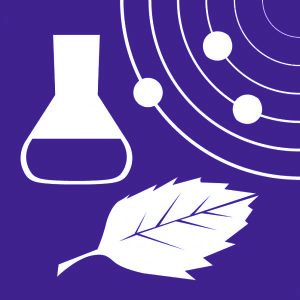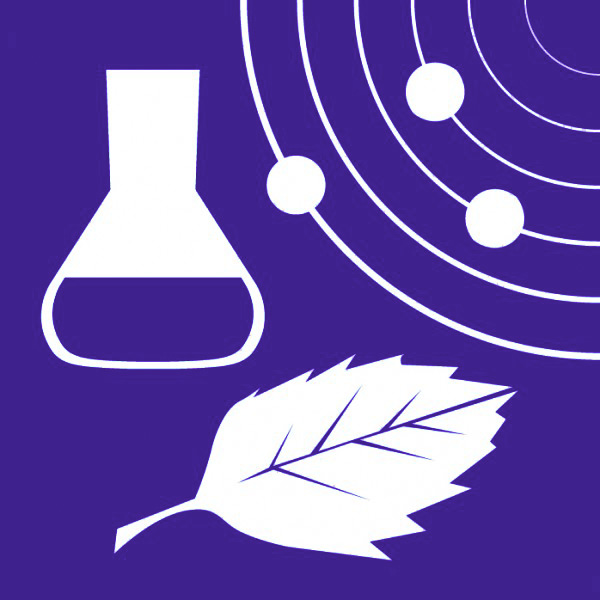Online High School
Science Classes
Lab Science
This compelling course engages students in the study of life and living organisms and examines biology and biochemistry in the real world. This is a yearlong course that encompasses traditional concepts in biology and encourages exploration of new discoveries in this field of science. The components include biochemistry, cell biology, cell processes, heredity and reproduction, the evolution of life, taxonomy, human body systems, and ecology.
Biology A covers the following concepts:
- The Chemistry of Life including the studies of carbohydrates, lipids, proteins and catalysts
- Cell Structure and Function including the studies of the function of organelles, cell homeostasis, and plant and animal cells
- Cellular Energy and Reproduction including the studies of light dependant and independant reactions in photosynthesis, mitosis and meiosis, cell cycle, sexual and asexual reproduction and applications of cell technology
- DNA and Protein Synthesis including the studies of genetic code, DNA and RNA structure, and DNA mutations
- Genetics and Heredity including the studies of genetics, laws of inheritance, acquired and inherited traits, and applications of DNA technology
This compelling course engages students in the study of life and living organisms and examines biology and biochemistry in the real world. This is a yearlong course that encompasses traditional concepts in biology and encourages exploration of new discoveries in this field of science. The components include biochemistry, cell biology, cell processes, heredity and reproduction, the evolution of life, taxonomy, human body systems, and ecology.
Biology B covers the following concepts:
- Natural Selection and Evolution including the studies of Darwin’s Theory, natural selection, biological evidence and the fossil record and evolutionary relationships
- Understanding Organisms including the studies of the kingdoms, plant structures, and overview of animals
- Organisms and the Environment including the studies of populations and the environment, relationships among organisms, and population growth
This rigorous course engages students in the study of the composition, properties, changes, and interactions of matter. The course covers the basic concepts of chemistry and includes eighteen virtual laboratory experiments that encourage higher-order thinking applications. The components of this course include chemistry and its methods, the composition and properties of matter, changes and interactions of matter, factors affecting the interactions of matter, electrochemistry, organic chemistry, biochemistry, nuclear chemistry, mathematical applications, and applications of chemistry in the real world.
Chemistry A covers the following concepts:
- Atomic Structure and the Periodic Table including the studies of the historical development of atomic theory, the modern atomic theory, the structure of the atom, electrons and the periodic table and periodic trends
- States and Properties of Matter including the studies of gasses, liquids, solids, and phase changes
- Chemical Bonding and Reactions including the studies of ionic bonding, covalent bonding, intermolecular forces and types of reactions
- Stoichiometry and the Gas Laws including the studies of molar masses, stoichiometric calculations, and gas laws
Prerequisite: Algebra II A
This rigorous course engages students in the study of the composition, properties, changes, and interactions of matter. The course covers the basic concepts of chemistry and includes eighteen virtual laboratory experiments that encourage higher-order thinking applications. The components of this course include chemistry and its methods, the composition and properties of matter, changes and interactions of matter, factors affecting the interactions of matter, electrochemistry, organic chemistry, biochemistry, nuclear chemistry, mathematical applications, and applications of chemistry in the real world.
Chemistry B covers the following concepts:
- Reaction Rate and Equilibrium including the studies of reaction rate, catalysts and shifts in equilibrium
- Energy in Chemical Reactions including the studies of energy, heat, calorimetry, and enthalpy
- Mixtures, Solutions and Acid-Base Reactions including the studies of mixtures and solutions, solubility, properties of acids and bases, ph and neutralization reactions
- Redox Reactions and Nuclear Chemistry including the studies of oxidation-reduction, types of radioactive decay, nuclear energy and nuclear radiation
Prerequisite: Algebra II A
Students enrolled in this dynamic course explore the scope of Earth sciences, covering everything from basic structure and rock formation to the incredible and volatile forces that have shaped and changed our planet. As climate change and energy conservation become increasingly prevalent in the national discourse, it will be important for students to understand the concepts and causes of our changing Earth. Earth Science is a course that provides a solid foundation for understanding the physical characteristics that make the planet Earth unique and examines how these characteristics differ among the planets of our solar system.
Earth Space A covers the following concepts:
- Scientific Knowledge
- Earth in the Universe including the studies of galaxies, stars, the solar system and the planets
- Earth’s History and Organisms including the studies of fossils, geologic time, and relative dating
- Earth’s Structure and Plate Tectonics including the studies of earthquakes, the rock cycle and volcanoes
- Erosion Deposition and Minerals including the studies of mineral and rock classification, and erosion
Students enrolled in this dynamic course explore the scope of Earth sciences, covering everything from basic structure and rock formation to the incredible and volatile forces that have shaped and changed our planet. As climate change and energy conservation become increasingly prevalent in the national discourse, it will be important for students to understand the concepts and causes of our changing Earth. Earth Science is a course that provides a solid foundation for understanding the physical characteristics that make the planet Earth unique and examines how these characteristics differ among the planets of our solar system.
Earth Space B covers the following concepts:
- Earth’s Hydrosphere including the studies of surface, ground and ocean water, wind and water erosion
- Earth’s Atmosphere and Weather including the studies of wind, storms, forecasting and weather patterns
- Earth’s Climate and Climate Change including the studies of climate change and climate history
- Humans and the Environment including the studies of air, land and water resources
Environmental science is a captivating and rapidly expanding field, and this course offers compelling lessons that cover many aspects of the field: ecology, the biosphere, land, forests and soil, water, energy and resources, and societies and policy. Through unique activities and material, high school students connect scientific theory and concepts to current, real-world dilemmas, providing them with opportunities for mastery in each of the segments throughout the semester.
Environmental Science A covers the following concepts:
- Scientific Processes and Introduction to Ecology including the studies scientific inquiry, adaptation and biodiversity
- Matter and Energy in Ecosystems including the studies of the cycles of matter, photosynthesis and energy flow in ecosystems
- Earth’s Biomes including the studies of factors that affect climate, characteristics of biomes and individual studies of specific biomes such as rainforests, deserts and marine
- Understanding Populations including the studies of population size, genetics and measuring populations
Environmental science is a captivating and rapidly expanding field, and this course offers compelling lessons that cover many aspects of the field: ecology, the biosphere, land, forests and soil, water, energy and resources, and societies and policy. Through unique activities and material, high school students connect scientific theory and concepts to current, real-world dilemmas, providing them with opportunities for mastery in each of the segments throughout the semester.
Environmental Science B covers the following concepts:
- The Atmosphere, Weather and Climate including the studies of atmospheric pollution, ozone, air masses and fronts and global climate change
- The Geosphere and Land Resources including the studies of human use of land, soil around the world, minerals and mining and land management and planning
- The Hydrosphere and Water Resources including the studies of the water we use, water pollution and water policy
- Earth’s Energy Resources including the studies of limiting factors and humans, nuclear energy and the social cost of resource use
- Humans and the Environment including the studies of human impact on the environment, impact policy, the effects of technology and success stories.
This course focuses on basic concepts in chemistry and physics and encourages exploration of new discoveries in the field of physical science. The course includes an overview of scientific principles and procedures and has students examine the chemical building blocks of our physical world and the composition of matter. Additionally, students explore the properties that affect motion, forces, and energy on Earth. Building on these concepts, the course covers the properties of electricity and magnetism and the effects of these phenomena. As students refine and expand their understanding of physical science, they will apply their knowledge to complete interactive virtual labs that require them to ask questions and create hypotheses.
Physical Sciences A covers the following concepts:
- Atoms and the Periodic Table including the studies of atomic theory, elements, the periodic table and metals
- Properties and Changes of Matter including the studies of states and changes of matter, physical and chemical properties
- Chemical Bonding and Reactions including the studies of bonds, compounds, and chemical reactions
- Mixtures, Solutions and Acid-Base Reactions including the studies of mixtures, acids and bases
- Motion including the studies of speed, velocity, and acceleration
This course focuses on basic concepts in chemistry and physics and encourages exploration of new discoveries in the field of physical science. The course includes an overview of scientific principles and procedures and has students examine the chemical building blocks of our physical world and the composition of matter. Additionally, students explore the properties that affect motion, forces, and energy on Earth. Building on these concepts, the course covers the properties of electricity and magnetism and the effects of these phenomena. As students refine and expand their understanding of physical science, they will apply their knowledge to complete interactive virtual labs that require them to ask questions and create hypotheses.
Physical Sciences B covers the following concepts:
- Forces and Newton’s Laws including the studies of gravity, Newton’s Laws and momentum
- Work, Power and Energy including the studies of potential and kinetic energy, heat, and thermal energy
- Waves, Sound and Light including the studies of waves, sound waves, and properties of light
- Electricity and Magnetism including the studies of electric charge, Ohm’s Law and magnetic fields
This course acquaints students with topics in classical and modern physics. The course emphasizes conceptual understanding of basic physics principles, including Newtonian mechanics, energy, thermodynamics, waves, electricity, magnetism, and nuclear and modern physics. Throughout the course, students solve mathematical problems, reason abstractly, and learn to think critically about the physical world. The course also includes interactive virtual labs options, in which students ask questions and create hypotheses.
Physics A covers the following concepts:
- One Dimensional Motion and Forces including the studies of speed and velocity, acceleration, Newton’s Laws, and momentum
- Two Dimensional Motion and Gravity including the studies of vectors, projectile motion, circular motion, and orbital motion
- Energy including the studies of potential and kinetic energy, work and power, conservation of energy and fission and fusion
- Thermodynamics including the studies of temperature and heat, heat transfer, and the laws of thermodynamics
This course acquaints students with topics in classical and modern physics. The course emphasizes conceptual understanding of basic physics principles, including Newtonian mechanics, energy, thermodynamics, waves, electricity, magnetism, and nuclear and modern physics. Throughout the course, students solve mathematical problems, reason abstractly, and learn to think critically about the physical world. The course also includes interactive virtual labs options, in which students ask questions and create hypotheses.
Physics B covers the following concepts:
- Waves and Sound including the studies of waves, sound waves, and radio waves and applications
- Waves and Light including the studies of electromagnetic waves, mirrors, lenses and diffraction
- Electricity including the studies of electrostatics, electric fields, Ohm’s law and electric circuits
- Magnetism and Electromagnetism including the studies of magnetic field and force, electromagnetic induction, and magnets and magnetism


